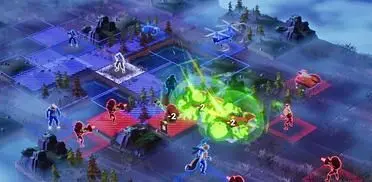Roughly five years after Doom Eternal spiced things up with a far more intense refresh of the series’ tried-and-tested formula, a new entry in the rebooted continuity (a prequel this time around) is about to be unleashed unto the world. Doom: The Dark Ages takes the long-running FPS franchise in a different but still familiar direction with even more impressive tech, but does it land its shots as well as the two previous entries?
Anyone who’s been playing these games for decades now is well aware of its tendency to shake things up with almost every new installment. Ripping and tearing through the demonic hordes in extremely gory fashion is always at the center of the show, yet how id Software has built each game around that basic premise has seldom remained samey. Doom games are special first-person shooters not only because of the genre-defining legacy they carry on their shoulders, but also due to their willingness to evolve as the graphical engines and hardware get better and better. The studio always remained at the forefront of tech and design innovations, and The Dark Ages is no exception.
First of all, the best thing I can confidently say about this new Doom is that id Software once again knew what to gun for, but that didn’t stop the creative leads from iterating on the recipe and taking the game to unexpected places. If Doom (2016) felt like a modern revival of the two original games and Doom Eternal embraced a breakneck pace almost resembling that of a character action game, The Dark Ages is yet another sidegrade that honors what came before while finding a unique flow of its own. However, I can’t help but feel like something has been lost on the way.
Game director Hugo Martin – and pretty much the entire marketing campaign – has been describing the Doom Slayer in this game as a “tank” versus the “fighter jet” he became in Eternal. Other comments in the lead-up to the release include “you shouldn’t be fighting the controls, you should be fighting the bad guys,” said in the nicest possible way but clearly referring to the complaints of a loud minority about the (generally well-received) 2020 installment. History has told us that paying too much attention to such comments from ‘purists’ typically results in lesser works of fiction (just look at the last Star Wars movie). As I rolled credits on The Dark Ages, I felt energized and satisfied, but also questioning the reasoning behind a number of changes that don’t necessarily improve the whole.
Whereas Eternal forced players to engage with all its mechanics and systems, from all the weapons in the Doom Slayer’s arsenal to a number of offensive actions that yielded different results and were crucial to acquiring health, armor, and ammo in the heat of combat, The Dark Ages is built around very simple block, parry, and shield-throwing mechanics; as for the weapon selection, while each has its own strength, you’re free to spam whichever you like best as long as you have ammo. In a way, it’s a return to ’16 and its simpler, more old-school approach, which may be welcomed by many players looking for a friction-less power fantasy, but both the combat loop and map design are streamlined in a way that removes much of the two previous games’ edge and unique modern ‘boomer shooter’ vibes. Gone are the iconic ‘glory kills’ too, replaced by quick (but slow-mo) finishers.
Mind you, it’s all delightfully punchy and arcadey still. The melee attacks have never felt better (I miss the chainsaw though); the weapon selection and its upgrades are all satisfying to use; there’s a ‘bullet hell’ element to some enemies’ attacks; and reloading is a thing of the past. By all accounts, it’s a Doom game in all the right ways, and it’s safe to say it puts most FPS released since 2020 to shame. It’s just lacking much of the confidence and impressive focus (more on that later) its predecessors had. Trying to please everyone can poison creativity, and I’m sad to report id Software might have spent too much time listening to the old guard here.
On the other hand, you’ll probably spend most of your time with the game marveling at the extremely metal energy covering not only the art direction and rule-of-cool lore, but also most character interactions and, of course, the id Tech 8-powered violence. For no good reason, we also get to pilot mechs and ride a cyber dragon during several sections. I’ll admit these new elements help add variety to the run-and-gun action, but they also come across as half-baked ideas from a far lesser AA shooter from the distant PS3/360 generation rather than truly engaging and memorable segments. Conversely, The Dark Ages has far more convincing boss battles – with a distinct, clearly defined main villain to boot – than ’16 and Eternal.
Some of that seventh generation energy is also brought back by the bloated, hollow, and exposition-heavy narrative, with a script that could probably fit into a couple of napkins but at the same time occupies a shocking amount of minutes with well-produced but just ‘whatever’ cutscenes which are most disruptive to the game’s pace that any platforming section diehards complained about in Eternal. The stakes are high at all times because… we’re told so, but it’s hard to care about the self-serious affair when the main conflict has already begun by the time the game starts and we don’t get to spend any time with the supporting cast outside the many battles the Doom Slayer must win for the Sentinels and Argent D’Nur.
Things pick up, if only because of how silly the plot goes and how genuinely surprising the levels get, near the final third of the game. There’s some sort of momentum and the story stops spinning its wheels, which at the same time reinvigorates the level design as well as enemy encounters and puzzles. I’m not saying the game isn’t enjoyable before this point (it’s a great shooter in spite of my negatives), but it hits its predecessors’ levels of confidence only after we reach a previously unseen dimension. I could go on and say similar things about the solid soundtrack by Finishing Move; more subdued than Mick Gordon’s work and often drowned by the hard-hitting sounds of guns and screams of demons. It gets to shine in places, but its use feels odd across most levels.
Around this time, the weapon, shield, and melee upgrades (if you haven’t completely ignored secret areas and optional pickups) also coalesce into the absurd power fantasy sold in the marketing materials and the cover of the game. This, combined with muscle memory doing its thing when it comes to perfect shield parries and melee swings (the windows are generous), is when this iteration of Doom shines brightest. It’s the most approachable of the rebooted entries by far due to the aforementioned sacrifices and changes, but I’d be lying if I said it doesn’t get into a slick, addicting flow once all mechanics click together. The fact the medieval-ish super shotgun just melts almost anything in front of it also helps. Eventually, you realize it’s all balanced around fun first and foremost.
Needless to say, another highlight is how remarkably well id Tech 8 looks and performs when compared to, well, almost every other engine used in current-gen games. ‘Stutter struggle’ is a non-issue, much like in the two previous games. Ray tracing (which can’t be deactivated) is implemented in a natural and non-distracting way. The sheer amount of demons on the screen at times – spread across maps which are more horizontal than vertical for the most part – can be mind-blowing considering the graphical fidelity. And, of course, it performs remarkably well (even on the Ultra Nightmare preset) on the same hardware (a 4070Ti + 7800X3D build) that struggled at times with STALKER 2, which highlights the unoptimized mess many UE5 games have been. This doesn’t totally come as a surprise after Indiana Jones and the Great Circle blew our socks off last year with a fork of id Tech, but id Software has raised the bar once again on this front. At the time of writing – and unless I’ve missed it – path tracing hasn’t been added to the game yet, and that’s where the most brutal performance cost might come from even with the help of DLSS and frame generation.
The ripping and tearing in Doom: The Dark Ages doesn’t disappoint, and anyone with even a passing interest in FPS ought to check out the latest id Software banger at some point, but it may be time to put this IP to rest for another decade before it stagnates by trying to please veterans a bit too hard. First, however, there’s a story DLC coming up that I can only guess will continue the story after a wide-open cliffhanger that doesn’t get Doom Slayer close to where we found him in Doom ’16.
I must also underline that, considering the $70 price tag set by Xbox and Bethesda and the fact this will take most players around 12 hours to complete (with 100% exploration not adding that much to the total playtime), you may want to wait for a sale or just stick with Game Pass for this one.
DOOM: THE DARK AGES VERDICT
Doom: The Dark Ages is a notable new entry in the long-running FPS series with a flavor and gameplay ideas of its own, but it can feel oddly unfocused at times, plus not every change is for the better.
TOP GAME MOMENT
Decimating an entire demonic army only with a plasma gun and perfect parries.
Good vs Bad
- The best graphical performance in a cutting-edge AAA game this generation
- The most metal art direction in recent memory
- Varied roster of both familiar and creative new weapons
- Mini-dungeons and areas built around specific ideas are nice changes of pace
- Ridiculous (in a good way) third act
- The smooth, old-school gunplay blends well with the punchy melee mechanics
- Combat loop and exploration are a bit too streamlined
- Weak, forgettable narrative
- Giant mech and dragon sections don’t reach their full potential









